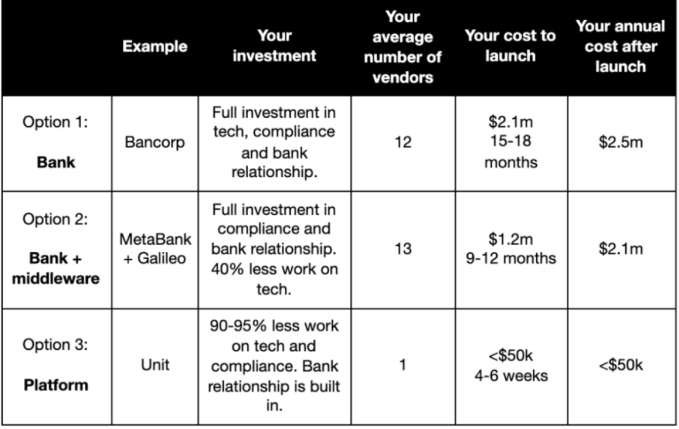News: Mark Zuckerberg threatened to end Facebook’s UK investment in private 2018 meeting with digital chief, warning over “anti-tech” tone
Round of applause for the Bureau of Investigative Journalism — which fought for two years to obtain details of a closed door meeting between Facebook’s Mark Zuckerberg and the UK secretary of state in charge of digital issues at the time, Matt Hancock (now health secretary). Freedom of information requests for minutes of the 2018
Round of applause for the Bureau of Investigative Journalism — which fought for two years to obtain details of a closed door meeting between Facebook’s Mark Zuckerberg and the UK secretary of state in charge of digital issues at the time, Matt Hancock (now health secretary).
Freedom of information requests for minutes of the 2018 closed-door meeting between Zuckerberg and Hancock, which took place amist Cambridge Analytica-related tensions, were repeatedly refused by the Department for Digital, Media, Culture and Sport (DCMS).
An order by the UK’s Information Commissioner’s Office finally forced the government to hand them over — with the ICO concluding that transparency and openness are clearly in the public interest where Facebook’s business and CEO is concerned.
Last year the UK government set out an intent to regulate online platforms, publishing its Online Harms White Paper — which proposes to place a legal duty of care on social media platforms to protect users against a range of harms, from bullying to illegal content. Although there’s no sign of a draft law.
The government has only said it will lay one before parliament ‘as soon as possible’. (And this summer refused to commit to doing so next year.)
Additional context specific to Facebook is Zuckerberg repeatedly refused to appear before the UK parliament’s DCMS committee in 2018 to answer questions about online disinformation and the role of Facebook’s ad-targeting tools in the UK’s Brexit referendum — sending a variety of minions in his stead despite multiple requests for face-time.
It’s now clear that Zuckerberg took time to meet privately with Hancock, on the sidelines of the Paris VivaTech conference in late May 2018.
There, according to the minutes obtained by the Bureau, the Facebook CEO accused the UK of having an “anti-tech government” — and joked about making it one of two countries he would not visit. (The other is redacted from the documents but may have been a reference to China.)
Zuckerberg also threatened to pull Facebook’s investment from the UK — saying that while it was the “obvious” place for them to invest in Europe they were now “considering looking elsewhere”.
The tech giant employs thousands of staff at its London base, which is a major engineering hub for the company.
At the start of this year Facebook announced it would add another 1,000 jobs — bringing its total headcount up to 4,000+ in the city. A new HQ it’s preparing in London’s King’s Cross, to consolidate its existing London offices, is intended to house 6,000 staff in total when running at full capacity.
Per the minutes, Hancock responded to Zuckerberg by offering “a new beginning” for the government’s relationship with social media platforms — and offered to change its approach from “threatening regulation to encouraging collaborative working to ensure legislation is proportionate and innovation-friendly”.
He is also said to have sought “increased dialogue” with Zuckerberg — in order to “bring forward the message that he has support from Facebook at the highest level”.
While Zuckerberg is reported to have expressed support for UK policy and its intent to regulate the Internet — but said he was “worried about tone”.
We’ve reached out to DCMS for comment on the meeting and remarks made by its former digital secretary and to ask why it fought disclosure of the information for two years. We’ll update this report with any response.
Around the time Zuckerberg met Hancock Facebook employed around 2,300 staff in the UK. The tech giant signed the lease on the King’s Cross office space in July 2018 — a few months after Zuckerberg’s meeting with Hancock — generating headlines which couched it as a ‘major vote of confidence in the UK capital‘.
Reached for comment on the revelations that Zuckerberg branded the UK “anti-tech” and threatened to pull the plug on its local investments, Facebook sent us this statement — attributed to ‘a spokesperson’:
Facebook has long said we need new regulations to set high standards across the internet. In fact last year Mark Zuckerberg called on governments to establish new rules around harmful content, privacy, data portability, and election integrity. The UK is our largest engineering hub outside of the US and just this year we created 1,000 new roles in the country.
Also responding to the Bureau’s story in a series of tweets today, Damian Collins, the former chair of the DMCS committee said the minutes show Facebook did not like the inquiry; and that Zuckerberg was “determined not to appear as a witness”.
Collins was highly critical of Zuckerberg’s refusal to testify to the UK parliament, issuing a summons for him to do so on May 1, 2018 should he ever deign to step onto UK soil, and publicly lambasting the company for displaying an evasive “pattern of behavior”.
The note of the meeting between Mark Zuckerburg & Matt Hancock in May 2018, 2 months after the Cambridge Analytica scandal, and published today by @TBIJ shows Facebook didn’t like the @CommonsDCMS inquiry I chaired & that Mark Zuckerberg was determined not to appear as a witness pic.twitter.com/0GdQDKmfxi
— Damian Collins (@DamianCollins) December 8, 2020
“The context of Mark Zuckerberg’s 2018 meeting with Matt Hancock was that it was two months after the Cambridge Analytica scandal had broken and MZ was refusing our requests for him to appear before [DCMS committee] to discuss it,” Collins tweeted.
“The notes from this meeting clearly show that Mark Zuckerberg was running scared of the DCMS committee investigation on disinformation and fake news and was actively seeking to avoid being questioned by us about what he knew and when about the Cambridge Analytica scandal.”
“It shows how afraid Mark Zuckerberg is of scrutiny that Facebook saw questions about the safety of users data on their platform, and how they worked with Cambridge Analytica as an ‘anti-tech’ agenda,” he added.
Outstanding questions related to the Cambridge Analytica include how much and when Zuckerberg personally knew about the scandal. It has previously emerged that Facebook staff raised internal alerts about Cambridge Analytica’s activity as early as September 2015 — yet the company was not booted off its ad platform until 2018.
A Facebook-instigated post-scandal app audit has also never fully reported findings.
Nor do we know why the tech giant hired the co-founder of the company that sold user data to Cambridge Analytica — around the same time it heard about the ‘sketchy’ company.
Zuckerberg’s question dodging over his personal level of responsibility vis-a-vis the scandal has been highly successful, even as his business empire has faced increased scrutiny and lawmakers around the world have new appetite to regulate the Internet.
The UK’s ICO issue no final report on its own investigation into the data misuse scandal. But in a letter to the DCMS committee in October it confirmed Facebook user data had been transferred to Cambridge Analytica and incorporated into a pre-existing database containing “voter file, demographic and consumer data for US individuals” — with the aim of predicting partisanship to target US voters with political messaging.
The ICO’s investigation did not find any evidence that the Facebook data which was sold to Cambridge Analytica had been used to target voters in the UK’s Brexit Referendum vote.
In its final report for the disinformation inquiry, the DCMS called for Facebook’s business to be investigated — citing competition and data protection concerns.
Last month the UK government announced a plan to set up a “pro-competition” regulator for big tech.








